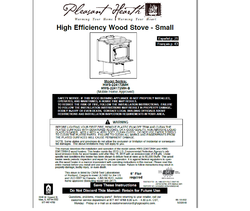We have noticed since we first fired up this used stove that the right back corner seems to stay cold. In fact, it's almost the whole right side of the stove - the left side front and back do all the work, all the flames happen over there, and only ever now and then do we see anything happening on the right side, particularly back corner.
I have also noticed over the past 2 weeks that it acts as though it's starved for air. I can't get hot temps anymore. I can barely get the flue to 350. Opening the door gives it the air it wants and it roars to life, then dies to almost nothing when the door is shut. It was not like this just 2 weeks ago.
Then my wife just informed me that when she was bringing it home the stove fell over and she had to restack the fire brick inside without a manual or pattern to go off of. Could we have inadvertently blocked an air hole or something by not stacking the fire brick correctly?
I have also noticed over the past 2 weeks that it acts as though it's starved for air. I can't get hot temps anymore. I can barely get the flue to 350. Opening the door gives it the air it wants and it roars to life, then dies to almost nothing when the door is shut. It was not like this just 2 weeks ago.
Then my wife just informed me that when she was bringing it home the stove fell over and she had to restack the fire brick inside without a manual or pattern to go off of. Could we have inadvertently blocked an air hole or something by not stacking the fire brick correctly?




